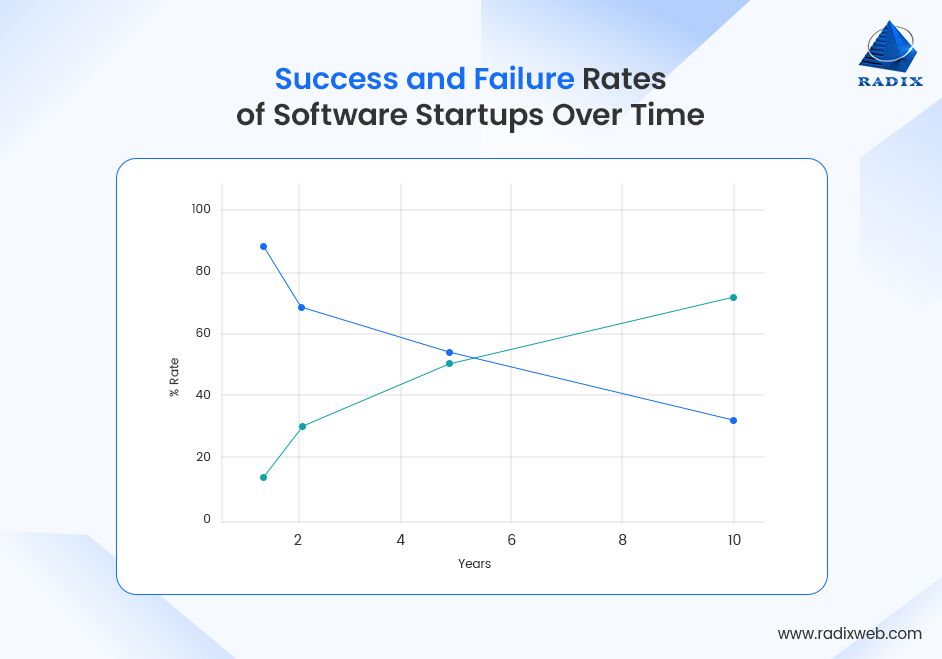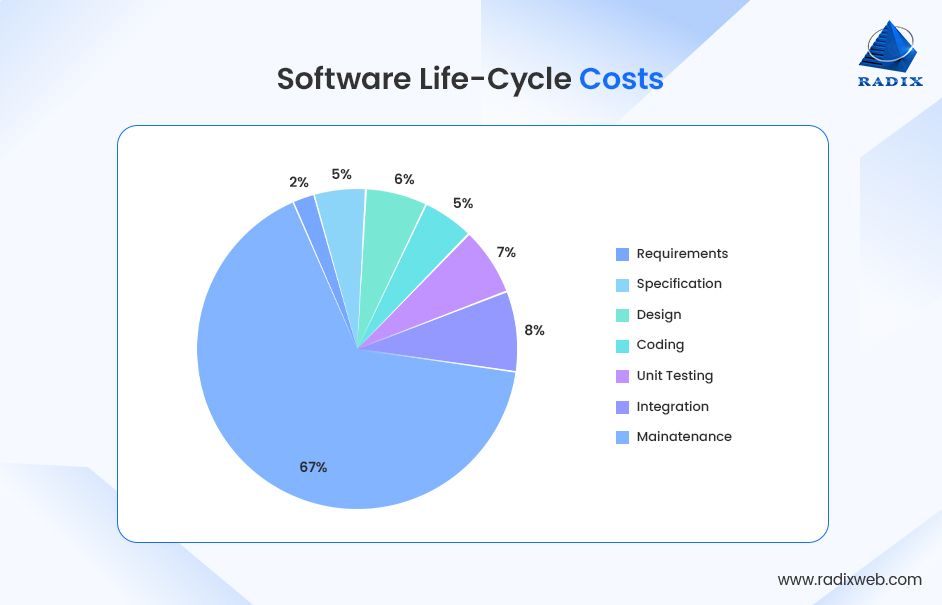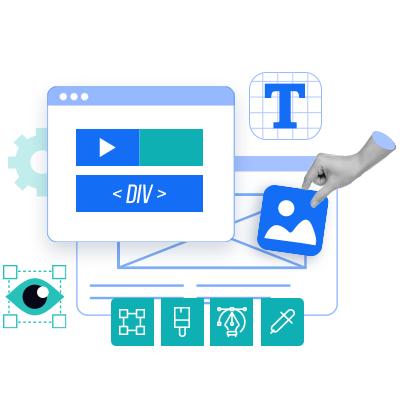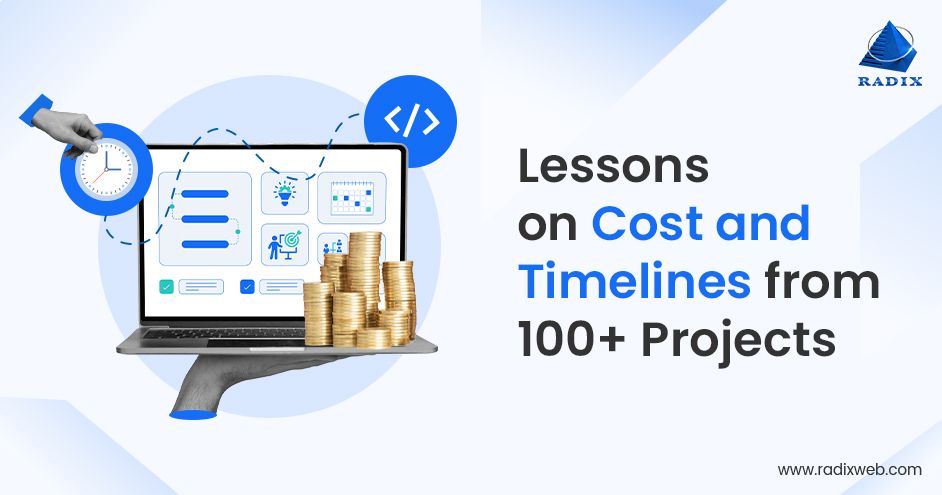Read More

Discover what’s next for AI in healthcare in 2026 - Get Access to the Full Report
ON THIS PAGE
Building Beyond the Now: In software development, the finish line isn’t launch day, it’s everything that comes after. Yet most software is designed for short-term impact, not long-term resilience. The systems that thrive are the ones built to adapt, integrate, and scale for years beyond release. In this blog, we walk you through what it takes to design software ready for the next 10,000 hours of real-world use.
In the rush to release, most software is built for the present. It is optimized for sprints, MVPs, and stakeholder demos. The focus is on shipping something that works. And doing it fast. But what happens after the launch party? Once the spotlight moves on and real users begin to depend on the system every day, the gaps start to surface.
Many software systems fail not because they were poorly built. But because the software design didn’t allow adaption or growth. Software rarely collapses on delivery day. It falters in year two. It falters when scaling becomes unpredictable. When integrations strain. When the architecture struggles to support new requirements.
Industry data shows this pattern clearly. As the years pass, software survival rates drop steadily. In fact, nearly half of software systems fail to meet expectations by year five.

That's why your software doesn't need to be ready for just Day 1. It needs to be ready for the next 10,000 hours.
Why 10,000 Hours Mean Your Software Is Designed For Endurance?
Malcolm Gladwell’s “10,000 hours” rule speaks about mastery through sustained effort. But that doesn't just apply to learning and habit formation. In terms of software, those 10,000 hours represent what happens after launch. They are the long tail of real-world use: bug fixes, scaling challenges, data migrations, evolving business needs, and new teams inheriting old code. This is where resilience is tested.
Designing durable software solutions means making the right trade-offs early, so the system thrives in those 10,000 hours, not just during the demo. After all, sustainable software development success is not about writing the perfect code. It is about making principled decisions that favor sustainability over short-term speed.
Alex Perzold, CEO of Agentech, puts it clearly. When discussing a core platform decision, he explained how his team “intentionally built redundant validation layers that slowed transactions by 200 milliseconds but prevented catastrophic failures.” That extra fraction of a second was a deliberate compromise. “The trade-off between speed and reliability,” he noted, “has saved us from outages that can kill companies overnight.”
Counterintuitive in the short term, this approach is exactly what enables long-term performance and trust.
What Does It Mean to Design Software for Endurance?
Software endurance best practices start with a different question. Instead of asking “How fast can we build this?” the real test is “Will this still serve us three years from now?”
That shift changes everything. It means building with change in mind from day one.
- Codebases must be readable and testable.
- Architectures should be modular so parts can evolve independently.
- Systems need to be extensible enough to absorb new capabilities without a costly rebuild.
- Documentation, testing, and deployment processes should assume that the people maintaining the system in year five will not be the ones who wrote it.
An endurance mindset focuses on four core dimensions:
- Maintainability: Can the code be understood, tested, and modified without risk?
- Adaptability: Can the system respond to shifting business priorities?
- Scalability: Will performance hold as usage multiplies?
- Sustainability: Can new teams take over without months of onboarding?
John Overton, CEO of Kove, describes a moment when his team faced pressure to deliver quick incremental fixes. “But I made the hard call to focus our core R&D” he recalls. That decision delayed delivery in the short term but unlocked a 60x improvement in AI model training times. “The key was staying committed to solving the fundamental constraint rather than optimizing around it,” he explains.
It takes discipline to resist the lure of quick wins, but endurance is rarely accidental. It is the result of deliberate design choices made early and reinforced over time.
Why Short-Term Thinking Fails Long-Term Software Development Goals
Many software teams take pride in rapid delivery. And in some contexts (like proofs-of-concept or experiments) speed is valuable. But if the software is meant to live beyond a quarter, short-term thinking plants seeds for long-term risk.
1. Technical Debt Becomes Inevitable
Speed-first delivery often means hardcoded logic, unclear ownership, and a backlog of TODOs that never get addressed. Early on, these choices feel harmless. But over time, they generate friction that compounds.
Technical debt is like compound interest. The longer you wait to pay it down, the costlier it becomes. Refactoring turns risky. Bugs hide deeper. Integrations get fragile.
Additional Read: Learn how CIOs can manage tech debt in software projects here.
2. Maintenance Consumes the Majority of the Budget
Studies show that roughly 70% of software costs come after launch, in the maintenance phase. Software maintenance includes performance tuning, dependency upgrades, bug fixes, and adaptation to changing environments.

If your system wasn’t designed for this stage, even small updates require outsized effort. Minor bug fixes eat into sprint capacity. The developer headcount rises just to keep the lights on. Confidence in the system erodes.
3. Ecosystem Lock-In and Obsolescence
Dependencies evolve. Libraries get deprecated. Cloud providers change their APIs. A tightly coupled system with no abstraction layer becomes hostage to external change.
Without flexibility, even a minor upstream update can trigger a cascade of internal breakages.
4. Scaling Exposes the Cracks
A system that runs fine at 1,000 users may grind under the weight of 10,000. Performance bottlenecks, poor concurrency handling, and inefficient queries often stay invisible - until real-world load exposes them.
When that happens, scaling isn’t an upgrade. It’s a rebuild.
These problems rarely appear in month one. They show up in month twenty-four, when you discover whether you designed for endurance or just for delivery.
Principles of Software That Lasts
Building long-lived software isn’t magic. It’s the result of deliberate, disciplined choices applied consistently at every stage of development. The best teams don’t just focus on delivering features quickly; they invest in decisions that keep their systems healthy, adaptable, and valuable for years. And here are some software longevity strategies or principles that you should keep in mind:

Simplicity Over Cleverness
At the heart of enduring software lies simplicity. The most dependable systems are rarely the flashiest—they favor clear, direct, and even “boring” code over clever hacks. Simplicity keeps code easier to debug, test, and extend.
Or Moshe, Founder of Tevello, shared, “We spent an extra month on our API design and it's paid off enormously as we've scaled...it helped us avoid the technical debt that plagues many early-stage startups”
That investment in simplicity compounds over time. APIs stay consistent, interfaces predictable, and bugs easier to track. While clever shortcuts may impress in the short term, they often introduce complexity that erodes maintainability. As Moshe’s experience shows, the cost of simplicity is almost always recovered many times over.
Modular and Loosely Coupled Architecture
If simplicity is the foundation, modularity is the structure that holds everything together as systems grow. In tightly coupled systems, small changes can ripple into large-scale failures. By contrast, modular architectures (whether built with domain-driven design, a microservices approach (when justified), or an API-first model) allow components to evolve independently. This creates a need for balancing enterprise software scalability and maintainability with the use of right software architecture.
Well-defined boundaries mean different teams can work in parallel without stepping on each other’s toes. They make it possible to improve or replace parts of the system without fear of regression, ensuring the software remains adaptable in the face of scale and change.
Automated Testing and CI/CD Pipelines
No matter how elegant the architecture, you can’t change it confidently without tests Automated testing isn’t just about checking correctness. It’s about creating a safety net that enables speed and trust. Unit tests protect core logic, integration tests verify component interactions, and regression tests prevent old issues from resurfacing. Security scans, linters, and quality gates add another layer of assurance.
When combined with CI/CD pipelines, this safety net transforms the release process. Updates become routine rather than risky, and the team gains the freedom to evolve the system without paralyzing fear of breakage.
Documentation and Coding Standards
Readable code is maintainable code. Consistent naming, structure, and documentation practices keep complexity from creeping in. This includes inline comments, markdown files, and architectural diagrams that future developers will thank you for.
Jono Ellis, Chief Product Officer at Cognito Education, explained their approach: “We now run ‘future-proofing sprints’ where we regularly pause feature development to improve system foundations and documentation”
Good documentation reduces misunderstandings, speeds up onboarding, and preserves institutional memory—often saving more time than it takes to create.
Designed for Change
Finally, great software is built with the understanding that change is inevitable. Requirements shift, technologies evolve, and business priorities pivot. Instead of locking everything to today’s assumptions, design with flexibility in mind. Use configuration-driven behavior, feature flags, and data models that can evolve.
Change-resilient systems don’t need to predict the future. They just need to be ready for it. The most successful teams see change not as a threat, but as a constant they’ve already accounted for.
The Software Vendor Equation: Two Delivery Mindsets
During the software outsourcing vendor selection process, mindset is often the hidden criteria that shapes your project’s future. Behind every delivery style lies a belief system and long-term software design principles that govern how software should be built, what “success” really means, and whether the focus is on sustaining long-term value or chasing quick wins.
Broadly, most vendors operate in one of two distinct modes.
1. The Release-Driven Vendor
This is the team that wins attention with speed. They promise quick sprints, polished interfaces, and rapid releases. Their plans often zero in on what your MVP will look like in a few short weeks, rather than how your platform will evolve over the next few years.
Their approach is ideal for narrow-scope projects (like prototypes or short-lived internal tools) where speed trumps future-proofing. But when the product is central to your business, this mindset can lead to accumulating technical debt that will demand costly fixes later.
2. The Endurance-Driven Vendor
These teams start by looking further ahead. They factor in growth, scalability, and ownership right from the first discussions. Progress may feel slower in the beginning, but it’s deliberate and rooted in robust architecture, maintainable code, and a clear vision of how the system will adapt over time.
With endurance-driven partners, the deliverable isn’t just working code; it’s a sustainable foundation designed to support your business through change and growth. They think like long-term collaborators, building not just for today’s needs but for the future you haven’t yet reached.
What Buyers Should Ask: A Checklist for Software Endurance
If you want software that lasts, your questions should go beyond timelines and costs and focus on how it will stand the test of time. This helps in reducing software technical debt and ensuring longevity.
1. Architecture & Scalability
- How will the system evolve?
- Are components modular and independently deployable?
- Can new teams integrate or extend it easily?
2. Testing & Quality Assurance
- What testing frameworks are used?
- How is code coverage measured?
- Are tests built into the CI/CD pipeline?
3. Documentation & Knowledge Transfer
- What documentation is included?
- Will onboarding materials be provided?
- How will new developers understand the system?
4. Upgrade & Dependency Management
- How often are libraries updated?
- What’s the process when dependencies are deprecated?
- How are security vulnerabilities tracked?
5. Long-Term Maintenance
- What’s the plan for year two and beyond?
- How is technical debt tracked?
- Can maintenance be moved in-house or to another vendor?
Conclusion: The Long Game WinsSoftware success isn’t about speed to launch. It’s about how well it performs years later. Anyone can build fast; few can build to last.So before your next release, ask yourself: Will this still serve us after 10,000 hours of real-world use? Will future developers thank us or curse us? In modern software development, those who design for endurance win the trust, the customers, and the market.At Radixweb, future-proof enterprise software development has always been our motto. That’s one reason why over 3000 clients from across the globe continue to trust us for their software needs. Want to see how we ensure enterprise software scalability with sustainable software development? Schedule a strategy session to see how we design durable software solutions.
Frequently Asked Questions
How do I know if my current software is built for endurance?
Is building software for endurance more expensive than building fast?
What’s the first step to improve software longevity in an MVP?
Can software endurance be achieved with low-code or no-code platforms?
What team skills matter most for designing software that lasts?
Ready to brush up on something new? We've got more to read right this way.







